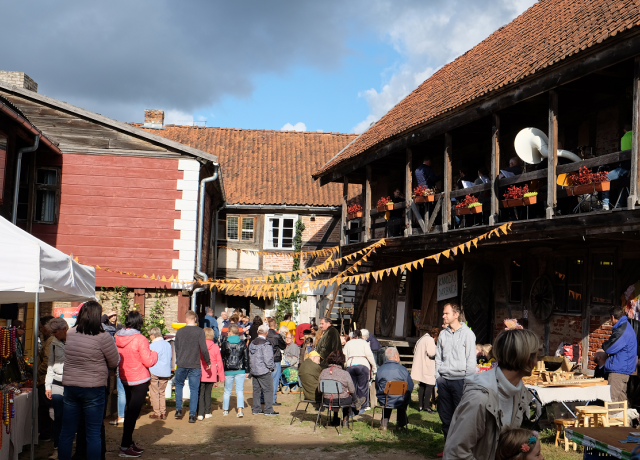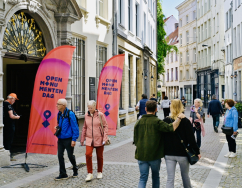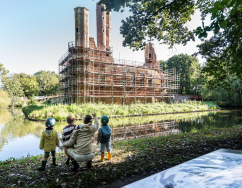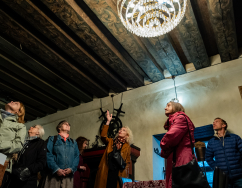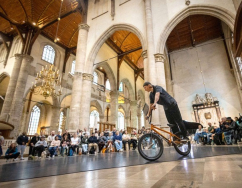European Heritage Days Article:
From Forgotten to Flourishing: Success Stories in Architectural Conservation
European Heritage Days Article:
From Forgotten to Flourishing: Success Stories in Architectural Conservation
Photo: Fair in the restored yard - EHD Story, Latvia (credit, Interdisciplinary Art Group SERDE)
To help explore conservation topics within the Architectural Heritage theme, the following article outlines building repurposing and restoration case studies across Europe and how these kinds of projects can be used as the basis for European Heritage Days events.
Considering the value of repurposing historic buildings
Looking at once abandoned buildings which have been repurposed is a way for this year’s theme to highlight the continuing value of these spaces. An example of a site where this has happened can be found in a European Heritage Days Story from the Netherlands which describes how a 19th century church built in an experimental mixture of Gothic and Romanesque styles was saved from demolition. After fundraising and working with local religious leaders to find a suitable reuse for the building, redevelopment saw the venue reopened as the Social Centre DePetrus, featuring a museum, library, shop and space for public events such as exhibitions, youth activities and a chess tournament while retaining many of the original internal features. Tours of buildings like this could explain the creative solutions and range of considerations which go into their redevelopment. Using success stories can also suggest possibilities for other places, which could perhaps be emphasised with a competition for schools or community groups to come up with innovative ideas for repurposing derelict local buildings to help raise public awareness of their potential.
Abandoned or underused historic buildings can also make an interesting venue for other types of events if possible and safe to use. Pop-up style galleries such as temporary exhibits or art installations could be curated to draw attention to this year’s theme, or these buildings might be used to host performances from local musicians and theatre groups to highlight potential future uses of the space. Visitors might also be interested in taking a tour of areas they don’t usually have access to, showing the architectural merits of the buildings while also demonstrating the need for conservation or restoration work.
Highlighting the skill and dedication of reconstruction projects
Often the need for conservation work of historic buildings is incremental and due to long-term neglect or decline over time, but sometimes destruction can happen more rapidly such as through natural disasters, fire or vandalism which can require more urgent and comprehensive reconstruction work. A notable example of the resilience of heritage conservation efforts can be seen in Poland where, after more than 85% of Warsaw’s historic centre was destroyed during WWII, a 5-year schedule of rebuilding work meticulously aimed to recreate the 18th century appearance of the city centre. Using archival documents and the expertise of art historians, architects, and conservators the medieval urban layout was retained with features such as the market, castle, religious buildings and the circuit of city walls reconstructed in a functional and symbolic rebuilding process which UNESCO considers an “exceptional example of the comprehensive reconstruction of a city”. Highlighting projects like this which have rebuilt places according to their historic appearance is an opportunity to showcase different architectural styles as well as traditional materials and craftsmanship skills. Alongside walks and tours by those involved with reconstruction projects, another immersive option might be to develop Virtual Reality experiences where visitors can explore lost buildings, see how their appearance has changed over time, or experience upcoming plans for their reconstruction.
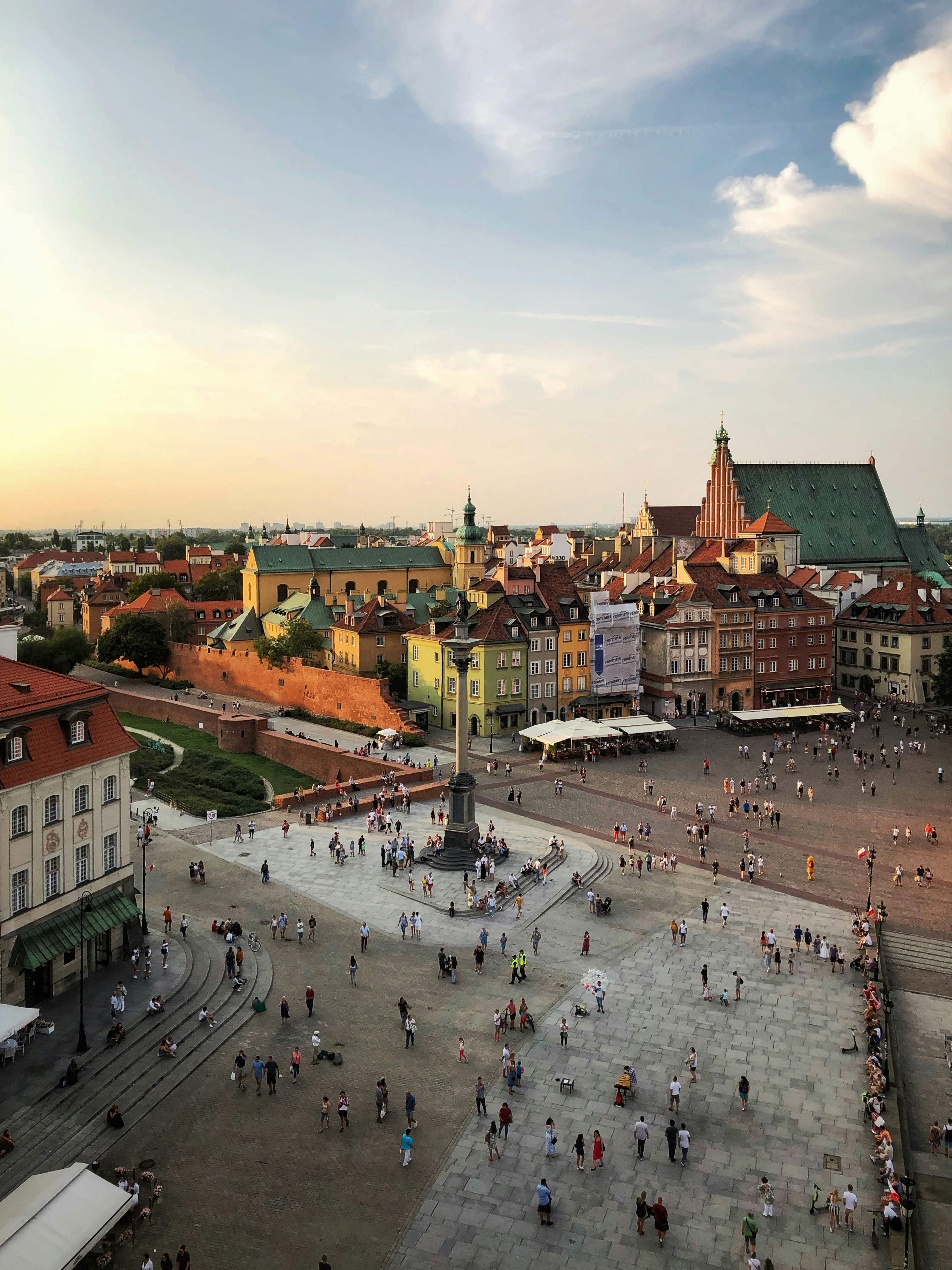
Exploring how historic areas can be adapted for modern life
Some towns have retained their historic areas by preserving their character while also developing them to make them more suitable for modern needs. Once such example can be seen in the Old Town in Bordeaux in France where a large-scale program of redevelopment has been combining restoration with urban renewal strategies. This project has been mitigating the effects of climate change while improving the living environment by revitalising vacant buildings and redeveloping public facilities such as parking for bikes. Work has improved the quality of housing as well as making adaptations to make the area more physically accessible to people with disabilities. Events based on areas like this could show how places can be developed while retaining their historic architectural identity.
Other event topics about rejuvenated places might include looking at how changing economies mean that areas once used for manufacturing or industry have been regenerated into shopping or residential areas, or they could focus on how improvements to public spaces have helped to support inclusivity and accessibility. Another angle could be to highlight the ways in which sustainability and architectural heritage are related by looking at adaptations with environmental considerations such as improving public transport infrastructure, reducing energy use and encouraging green spaces. Through tours, talks and exhibitions, events could involve local architectural practices which specialise in regeneration work to provide insight or even an on-site look at ongoing work to share their approach with visitors.
Celebrating individuals and communities making a difference
With thousands of volunteers and community groups taking part in European Heritage Days, the festivities are a perfect time to celebrate the difference people can make in supporting and cherishing their built environments. One example of how communities can save historic places they love can be found in a European Heritage Days Story from Latvia, where a group of artists decided to restore an abandoned yard and warehouse dating back to the 18th century by converting it into their artist studio. Through a series of workshops during annual summer camps, the building was brought back into use and can now host up to twenty artists with studios for those working with ceramic, metal, wood and photographic mediums.
Open days showing what places looked like before and after restoration work could highlight what can be achieved through community efforts. For any ongoing projects, on-site visits could allow local residents to see this work in action, perhaps with architectural conservation bootcamp events offering intensive workshops for participants to learn hands-on techniques about preserving historic buildings. For sites where work has yet to start, local heritage protection societies could help create maps of forgotten or vulnerable historic buildings. Tours of these sites could take place to explain why they’re special, or if access is not possible then photo galleries showing their features could help to draw attention to them and even possibly help find volunteers or fundraise to support their protection.
Looking for more ideas about this year’s theme? The article ‘5 Ways to Approach This Year’s Heritage and Architecture Theme’ offers a range of options, while more background information, entry points and event ideas can be found in the Architectural Heritage brochure for organisers.
